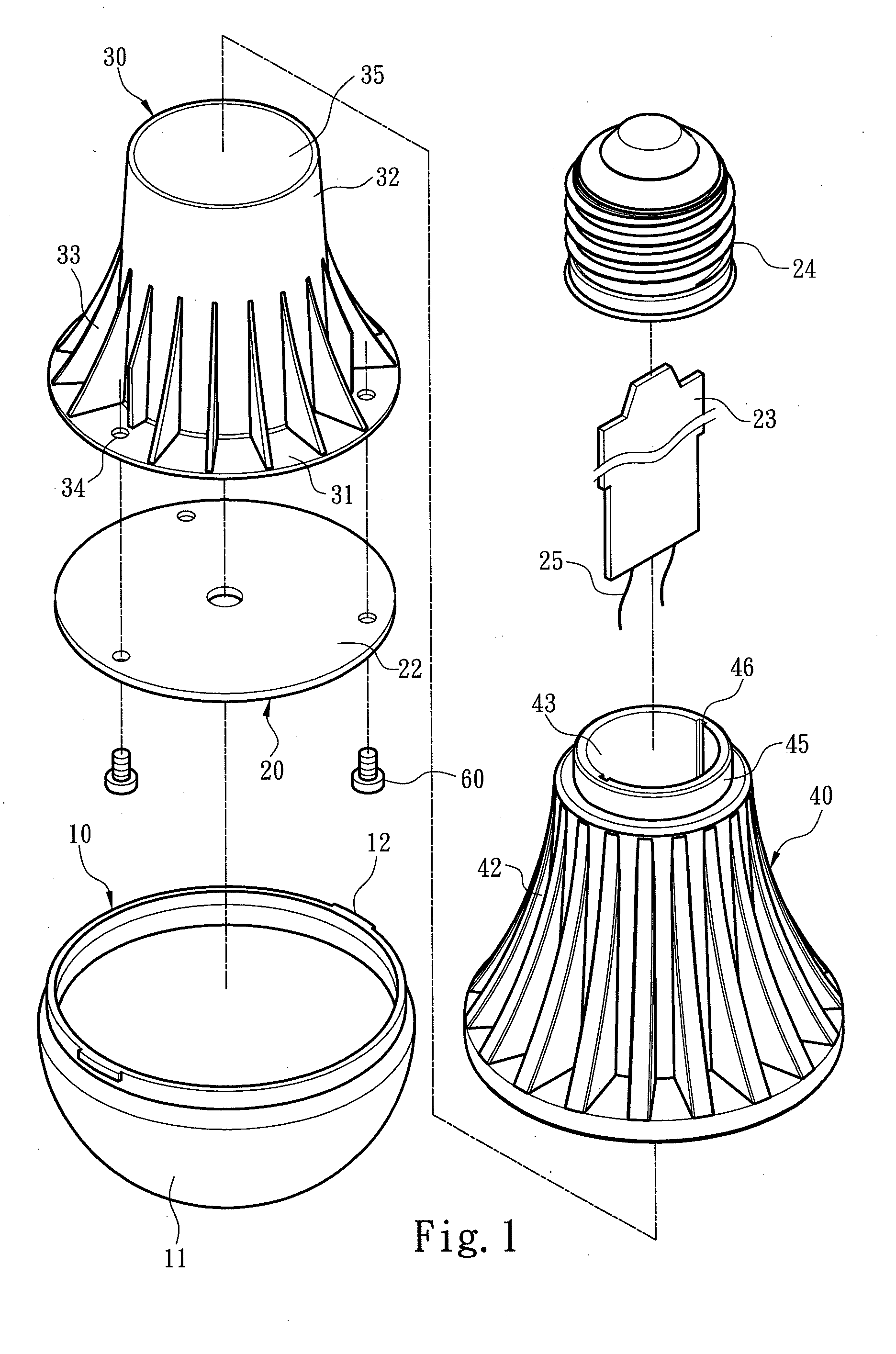Light emitting diode bulb structure for enhancing heat dissipation efficiency
a technology of light-emitting diodes and bulb structures, which is applied in the direction of lighting and heating apparatus, lighting support devices, light sources, etc., can solve the problems of shortening the life cycle of the overall structure, prone to multiple disposal by manufacturers, and reducing the heat dissipation efficiency of heat-dispersing seats, etc., and achieves the effect of improving the heat dissipation efficiency and high costs
- Summary
- Abstract
- Description
- Claims
- Application Information
AI Technical Summary
Benefits of technology
Problems solved by technology
Method used
Image
Examples
Embodiment Construction
[0037]FIGS. 1 and 2 respectively show first and second exploded views of a light emitting diode (LED) bulb structure according to an embodiment of the present invention. Referring to FIGS. 1 and 2, the LED bulb structure for enhancing heat dissipation efficiency comprises a lamp shell 10, a light emitting assembly 20, a heat conducting body 30 and a heat dissipating body 40. The light emitting assembly 20 comprises a light source substrate 22 disposed in the lamp shell 10 and carrying at least one light emitting element 21, a circuit board 23 electrically connected to the light source substrate 22, and a power connection socket 24 receiving an external power and electrically connected to the circuit board 23.
[0038]The lamp shell 10 comprises a transmittance portion 11 and at least one wedging portion 12 extended from the transmittance portion 11. The heat dissipating body 40 comprises a carrying plane 41 corresponding to the light source substrate 22, and at least one positioning po...
PUM
 Login to View More
Login to View More Abstract
Description
Claims
Application Information
 Login to View More
Login to View More - R&D
- Intellectual Property
- Life Sciences
- Materials
- Tech Scout
- Unparalleled Data Quality
- Higher Quality Content
- 60% Fewer Hallucinations
Browse by: Latest US Patents, China's latest patents, Technical Efficacy Thesaurus, Application Domain, Technology Topic, Popular Technical Reports.
© 2025 PatSnap. All rights reserved.Legal|Privacy policy|Modern Slavery Act Transparency Statement|Sitemap|About US| Contact US: help@patsnap.com



